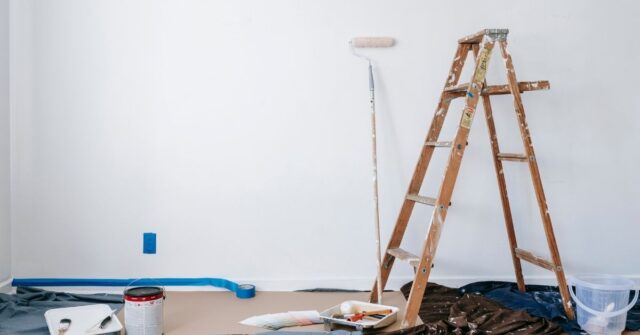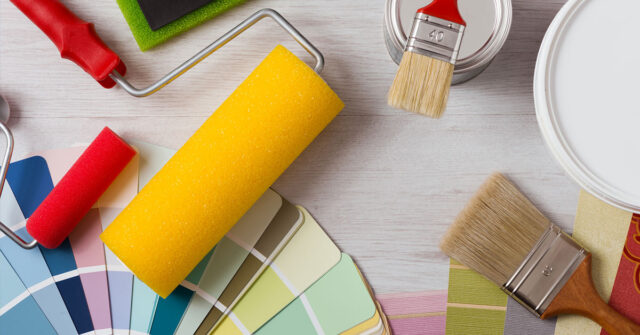Welcome to our comprehensive guide on selecting the best types of paint for various surfaces in your Australian home.
Whether you are renovating, redecorating, or simply giving your space a new look, choosing the right paint is crucial for both aesthetics and longevity.
Introduction to Home Painting in Australia
Australia’s unique climate conditions demand careful consideration when selecting home paints. From the harsh sun to coastal salt spray, external factors greatly influence the type of paint you should choose.
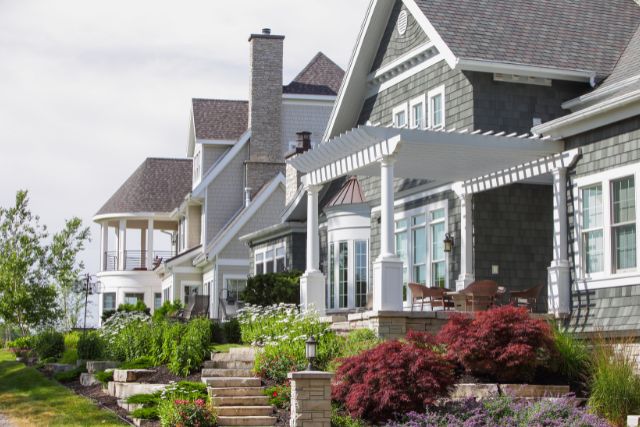
Understanding the Australian Climate and Its Impact on Paint Selection
The Australian climate varies from hot and dry to humid and coastal. These conditions require paints that are not only visually appealing but also resilient to weathering and environmental factors.
Current Trends in Australian Home Decor and Colour Preferences
Contemporary Australian homes are seeing a shift towards natural tones and eco-friendly paints.
The trend includes a preference for colours that blend with the natural landscape, reflecting a harmonious balance between home and environment.
Essential Painting Supplies and Tools
Before beginning your painting project, it’s important to gather the right tools and equipment. Quality supplies can make a huge difference in achieving a professional-looking finish.
Choosing the Right Brushes and Rollers
Selecting the correct brushes and rollers is crucial. For most interior walls, a 9-inch (23 cm) roller and a variety of brushes for different trim sizes will be sufficient.
Importance of Primers and Sealers
Primers and sealers ensure better paint adhesion and longevity. They are particularly important for surfaces that haven’t been painted before or have undergone repairs.
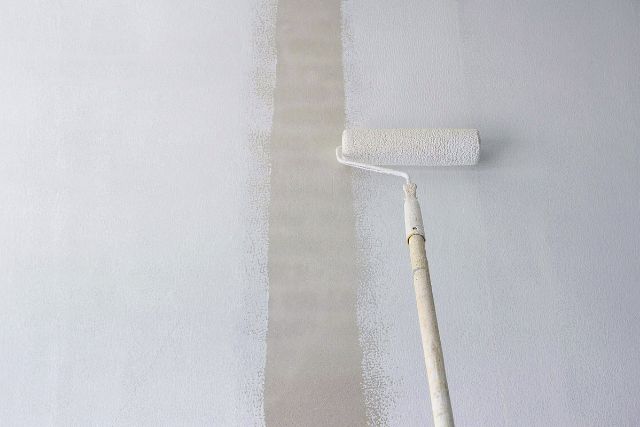
Safety Equipment and Best Practices
Always prioritize safety. Use masks, safety glasses, and gloves, especially when sanding or using oil-based paints, to protect from fumes and dust.
Paint Types Explained
Different surfaces and applications call for different types of paint. Understanding the basics will help you make an informed choice.
Water-Based vs Oil-Based Paints: Pros and Cons
Water-based paints are easy to clean and emit fewer odours, while oil-based paints are more durable but take longer to dry and have a stronger odour.
Specialty Paints: Eco-Friendly and Low-VOC Options
Eco-friendly paints with low volatile organic compounds (VOCs) are becoming popular in Australia, offering a safer option for your family and the environment.
Understanding Paint Finishes: Matte, Gloss, and More
The finish of the paint can affect its appearance and durability. Matte finishes hide imperfections well, whereas gloss finishes are easier to clean but highlight flaws.
Painting Interior Surfaces
Interior surfaces require specific types of paint, depending on the room’s function and the surface material.
Best Paints for Walls and Ceilings
For most interior walls and ceilings, water-based acrylic paints are preferred. They are less toxic and easier to apply than oil-based alternatives.
Choosing Paints for Kitchens and Bathrooms
In kitchens and bathrooms, opt for semi-gloss or high-gloss paints as they resist moisture and are easier to clean.
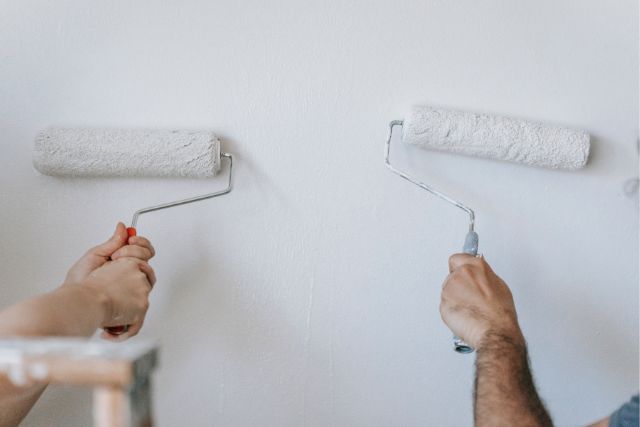
Tips for Painting Woodwork and Trim
For woodwork and trim, enamel paint, particularly oil-based, is often recommended due to its durability and smooth finish.
Painting Exterior Surfaces
The exterior paint must withstand harsh weather conditions, UV rays, and other environmental factors.
Exterior Wall Paints: Weatherproofing Your Home
Look for exterior paints specifically formulated for weather resistance. Acrylic latex paints are generally a good choice for their flexibility and durability.
Choosing the Right Paint for Outdoor Timber and Decks
For timber and decks, use paints or stains that offer UV protection and resistance to mould and rot.
Durable Paints for Metal Surfaces
Metal surfaces, such as railings and gutters, require paints that prevent rust and withstand temperature changes.
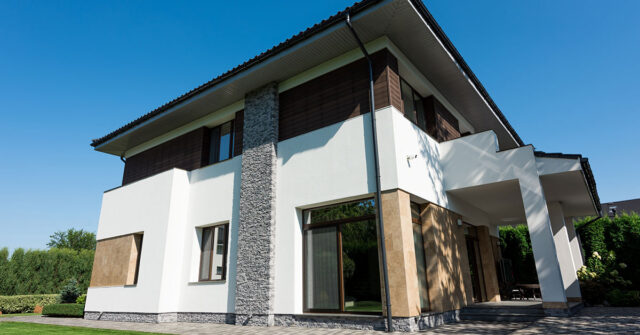
Colour Selection and Aesthetics
Choosing the right colour can transform your space, creating the desired mood and aesthetic appeal.
Colour Psychology: Setting the Right Mood in Each Room
Colours influence mood. Soft blues and greens are calming, making them ideal for bedrooms, while vibrant colours like red can energize spaces such as living rooms.
Coordinating Paint Colours with Home Furnishings
Consider your existing furnishings when selecting paint colours. Aim for a harmonious colour scheme that complements your decor.
Visualising Colours: Tools and Techniques
Utilize colour swatches and digital tools to visualize how different colours will look in your space before committing.
DIY Painting Tips and Techniques
DIY painting can be rewarding and cost-effective. Here are some tips to help you achieve professional results.
Surface Preparation for a Lasting Finish
Proper surface preparation is key. Clean, sand, and prime surfaces as needed before applying paint.

Step-by-Step Guide to Painting Different Surfaces
Follow a step-by-step approach for each surface type. Start from the top (ceilings) and work your way down to avoid drips on freshly painted areas.
Common Painting Mistakes and How to Avoid Them
Avoid common mistakes such as overloading the brush, skipping primer, and painting in unsuitable weather conditions.
Maintenance and Upkeep of Painted Surfaces
Regular maintenance can extend the life of your paint job and keep it looking fresh.
Cleaning and Caring for Interior Painted Walls
Gently clean walls with a soft, damp cloth. Avoid harsh chemicals that can damage the paint.
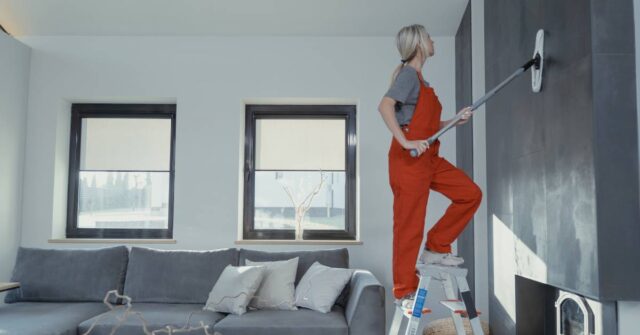
Maintaining Exterior Paintwork in the Australian Climate
Regularly check exterior paint for signs of wear and tear, especially after extreme weather events.
When to Repaint: Recognising Signs of Wear and Tear
Look for fading, cracking, or peeling as indicators that it’s time to repaint. A good paint job can last from 5 to 10 years, depending on the conditions.
Conclusion: Enhancing Your Home with the Right Paint
Choosing the right paint for your home can enhance its beauty and protect it for years to come. We hope this guide has provided you with valuable insights to make the best choices for your Australian home.
Recap of Key Points
In summary, consider the Australian climate, the surface material, and the desired finish when choosing paints. Don’t forget to prioritize safety and proper preparation for the best results.


